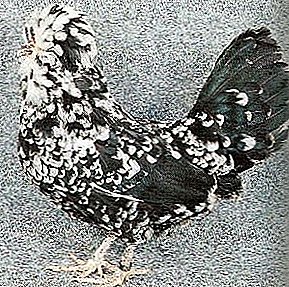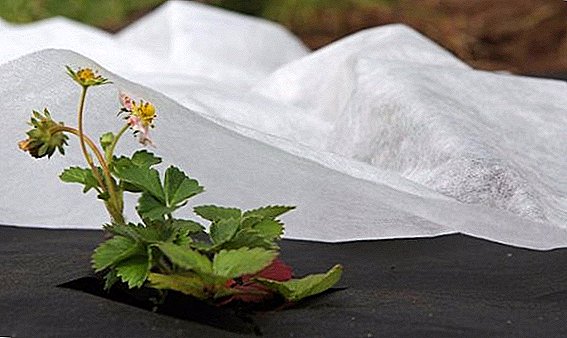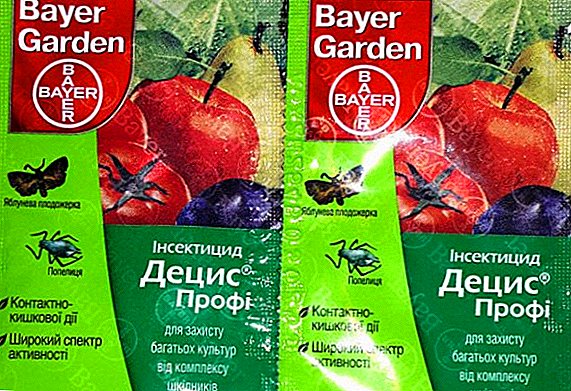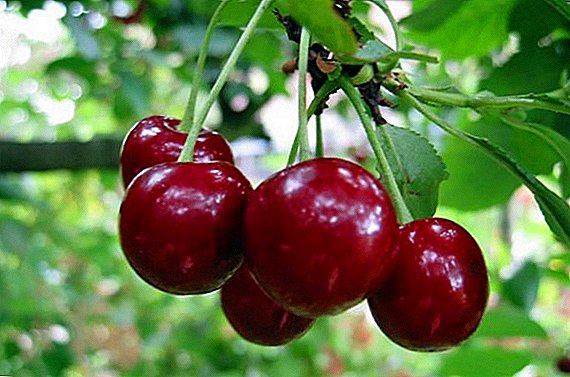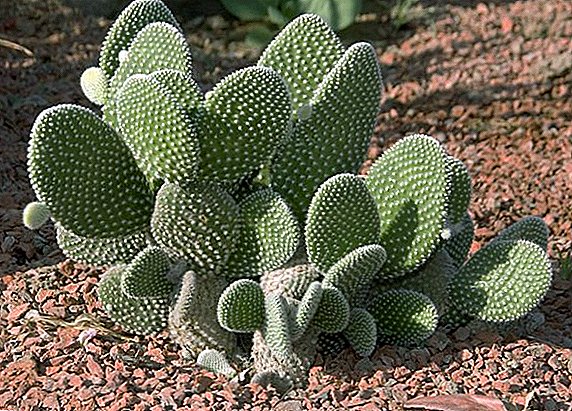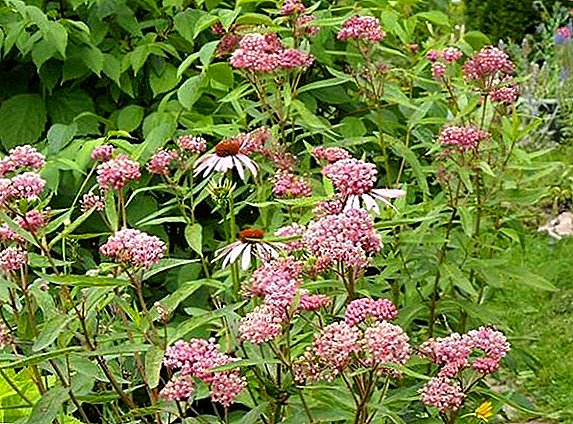 Plum trees are valued by gardeners for both tasty fruits and unpretentiousness. And the Ussuri plum will be especially interesting to the residents of the northern regions, since it can withstand low temperatures in winter and at the same time bring good yields. You can find out more about how remarkable this fruit tree is from our material.
Plum trees are valued by gardeners for both tasty fruits and unpretentiousness. And the Ussuri plum will be especially interesting to the residents of the northern regions, since it can withstand low temperatures in winter and at the same time bring good yields. You can find out more about how remarkable this fruit tree is from our material.
Tree description
The Ussurian plum (lat. Prunus ussuriensis) is a low fruit tree whose trunk reaches a maximum height of four meters. It is covered with bark of gray or brown color. The plum crown is round, wide, with branches elevated upwards. The branches are thin, fragile, so the peculiarity of the tree is the rapid shedding of fruits.  The shape of the crown distinguish two types of Prunus ussuriensis:
The shape of the crown distinguish two types of Prunus ussuriensis:
- with thickened crown;
- with sparse crown.
Did you know? Slivovitsa - home-made plums, and plum - wine from them.A peculiarity of the plum tree is that it blooms before foliage appears in May. It blooms with small white flowers that abundantly cover all branches. Flowers can withstand temperatures as low as -3 ° C. Fruits appear in July-September, depending on the region of growth. Today, the Ussuri plum is actively cultivated in Siberia and the Far East.
Check out the best varieties of plums for your garden.
Fruit Description
The shape, color, taste and weight of the fruits of each variety are different. The mass of fruits varies from two to 25 g. In shape, they can be rounded, elongated, and pointed. By coloring - purple, maroon, yellow, whitish, black with a red tint. The stone, as a rule, is small in all varieties and is not very well separated from the pulp. The flesh may vary in color. The taste is most often sweet and sour; a slight bitterness can be felt near the stone. 
Lighting Requirements
Plum trees of this type like good lighting, so they should be planted in sunny areas, well protected from all sides from the winds. The best time to plant is spring.
Learn how to deal with diseases and pests of plums, as well as multiply it, plant and prepare for the winter.
Soil requirements
Best of all, the tree will feel in rich fertile soil with a neutral level of acidity.
Important! If the acidity is too high, then a year before planting the plum, the land must be fed with lime or dolomite (200 g per 1 sq. M).When planting, for normal growth of the plant and the rapid adaptation of the seedling, it is desirable to fertilize the soil with rotted manure (compost), superphosphate, potassium sulfate (wood ash).

Disease and pest resistance
The Ussurian species is not resistant to any diseases or pests. Like all plums, this tree is attacked by podzhogorok, sawflies, aphids, leafworms. Trees have poor immunity to asteriasis, gray rot, coccomycosis, black fungus, root cancer, rust and fruit rot. To avoid infection by diseases and parasites, it is necessary to carry out preventive measures and properly care for the plant.
Frost resistance
Ussuriisk plum is famous for its cold resistance. The lowest temperature at -40 ° C is able to withstand the variety Ussurian holiday. At the same time gardeners noticed: the more winter-resistant plum has, the less fruit it brings.
Read also about such varieties of plums as: "Anna Shpet", "Bogatyrskaya", "Honey White", "Stanley", "Eurasia" and "Morning".
Pollination
The Ussurian plum does not belong to self-pollinated trees, therefore for its successful fruiting it is necessary that pollinating plants are located in close proximity. For this type of pollinators are other varieties of plums that have the same flowering time. For normal fruiting, it is necessary that another two or three plum trees grow in the garden. Also, representatives of this species can be pollinated sand cherries. 
Fruiting and Yield
The grafted tree enters fruiting in the third or fourth year of life. Plum grown from seeds - at the age of five or six. The average annual yield of a plant is about 15-20 kg. Given the low growth of trees - this is a pretty good indicator. Duration of fruiting with proper planting and care - 20 years. Fruits need to begin to remove slightly immature, because with full ripening, they quickly leave the branches. It is better to put them on ripening in a warm room. There they will be ready to eat after three to five days.
Important! Ussurian plum does not tolerate the lack of moisture. Therefore, in dry regions it is necessary to ensure its additional watering at least once in 10-12 days. One tree will need 9-10 l.
Purpose
Tasty and juicy fruits of the Ussuri plum are consumed fresh, used as a dessert, for filling in pastries. They are also suitable for processing - making jam, jam, jam, marshmallow, drinks (compote, juice). 
The best varieties of Ussuri plum
The best varieties of Ussuri plum recognized:
- "Ural Yellow". The tree grows up to 2.5 m in height. It is characterized by a yield of 10-15 kg per plant. In early August, brings round fruits of yellow color weighing 16 g. Their flesh is also yellow. It tastes sweet, on a five-point dessert scale estimated at 4.5 points.
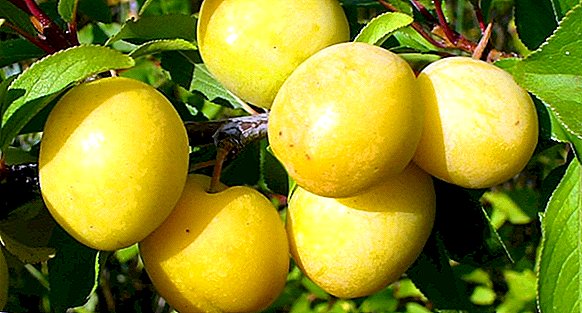
- "Ural prunes". It grows up to two meters. It has a wide, spreading crown. On average, the annual yield of about 15 kg per plant. Fruits are oval, weighing 13-15 g each. Covered with medium thickness skin purple. The flesh is light. It tastes sweet, slightly tart, not very juicy.

- "Golden Niva". The trunk reaches a height of 2 m. The crown is wide with raised branches. Fruits brings annually in the second half of August. From one tree you can collect about 15 kg per season. Plums in this class have a mass of 15 g each. Their skin and flesh are colored yellow. Fruits are tasty, juicy. Pulp easily lags behind the stone. The fruits of this variety can be stored for a long time.

- "Snow White". It grows up to 2.5 m. Crohn spreads to 4 m in diameter. It is characterized by high yield - up to 20-30 kg from one tree. Rounded fruits with a light yellow skin and white bloom. The mass of each of them an average of 30 g. The taste is slightly sour.

- "Dawn of Altai" ("Ussuri 25-15"). The tree reaches 2 m in height, has an open crown. It is characterized by high frost resistance. Bring elongated fruit red.
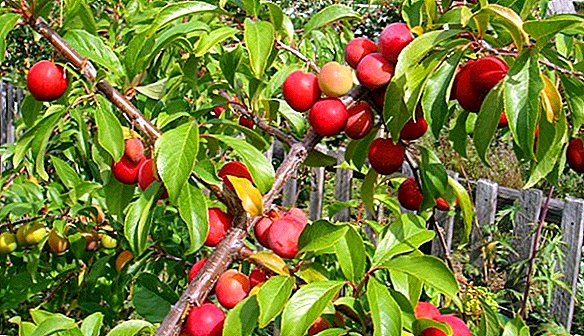
- "Yellow Hoops". Representatives of the variety have a powerful, spreading crown up to 2.5 m in height. They produce medium-sized fruits weighing 18-20 g each in yellow color. Plums are tasty, juicy, with a small bone, which is poorly separated from the pulp.
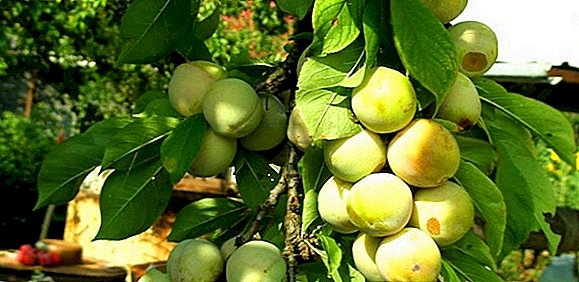
- "Pioneer". It grows up to 2.5 m. Gives stonewort weighing 15-20 g. Their skin is painted in dark red color. The flesh is sweet, tasty, juicy.
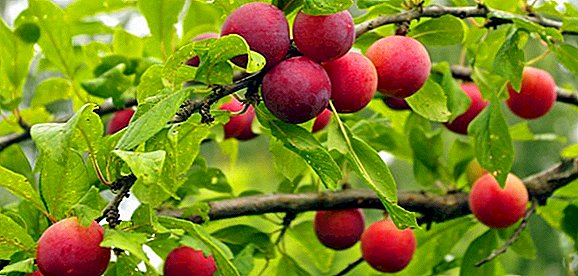
Did you know? The fruits of the plum tree are very valuable for the human body. Knowing about their benefits, the Queen of England Elizabeth II each begins her breakfast with two plums.
Video: Ussurian plum So, the main feature of the Ussuri plum is that it is very frost-resistant - this allows it to be planted in the northern regions, where climatic conditions are unfavorable for its other relatives. Another feature of it - skoroplodnost. In general, this variety is unpretentious, does not require special measures for care. Even a novice can plant and grow it. With proper care, the plum tree will for a long time please its owners with tasty and healthy fruits.










